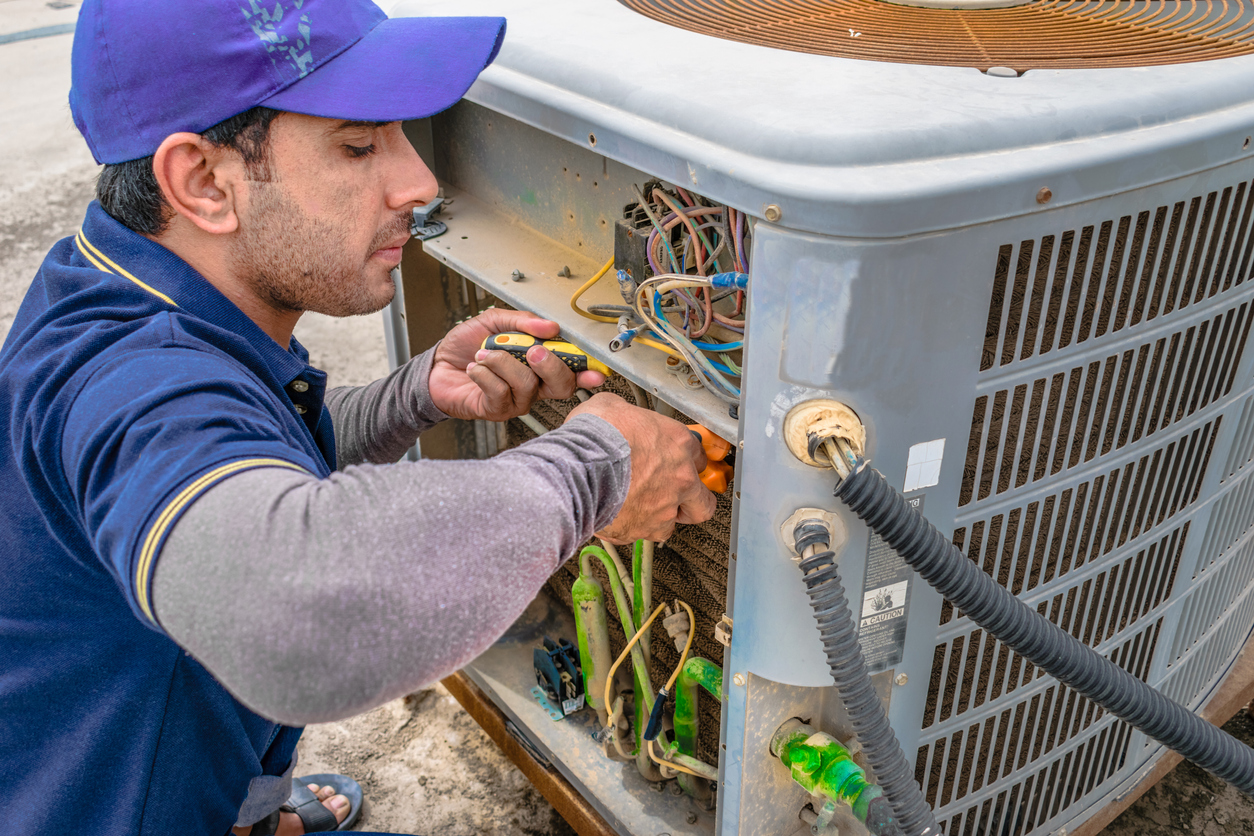Evaluating Your Room: Trick Dimensions for Air Conditioning Installation
If you've ever before found on your own in a room where the cooling just couldn't seem to stay on top of the summer season heat, you may take advantage of reviewing your room.
Guaranteeing your a/c system is properly sized and mounted needs attention to vital measurements such as space dimension, window and door dimensions, ceiling height, insulation top quality, and air movement patterns. By understanding these variables, you can enhance your air conditioning system's performance and performance.
Yet how specifically do these measurements effect your cooling setup?
Secret Takeaways
- Properly determine room measurements for correct device ability and airflow optimization.
- Pick energy-efficient windows and doors to enhance insulation and lower warmth transfer. https://mortlakeacinstallation.co.uk
- Make sure perfect air vent positioning and unobstructed air flow for effective cooling circulation.
- Upgrade insulation to enhance thermal resistance, seal gaps, and enhance general system efficiency.
Room Dimension Dimensions
When measuring room size for a/c installment, see to it you properly assess the measurements to identify the suitable unit capability. Begin by taking into consideration furniture placement within the area. Furniture can obstruct air flow if placed too close to vents or the a/c unit. To assure maximum air conditioning efficiency, organize your furnishings in a manner that promotes correct air movement throughout the room.
Furthermore, consider the room's format and size when preparing for air circulation. Correct air blood circulation is critical for keeping a constant temperature throughout the space. Bear in mind any challenges that can disrupt the circulation of air, such as curtains blocking vents or huge pieces of furniture obstructing air flow. By guaranteeing sufficient room for air to circulate openly, you can make the most of the efficiency of your air conditioning system and produce a comfy atmosphere in your home.
Window and Door Capacities
To assure appropriate a/c installment, examine the measurements of doors and windows in the space to optimize airflow and cooling down performance. When examining window and door measurements, take into consideration the following:
Frame Compatibility: Make sure that the a/c unit you pick is compatible with the frames of your doors and windows. Inappropriate fit can bring about air leakages and decreased power performance.
Installment: Take into consideration the setup process when selecting an a/c device. Some systems might require certain home window dimensions or added alterations for appropriate installment.
Product Selection: Pick windows and doors made from products that supply great insulation to enhance power performance. Effectively protected doors and windows can help preserve a consistent temperature level in the area.
Energy Effectiveness: Go with energy-efficient doors and windows to lower warmth transfer and enhance the total performance of your air conditioning system. Energy-efficient products can improve the cooling abilities of your room while reducing power expenses.
Ceiling Height Evaluation
Evaluating the elevation of your ceiling is essential for establishing the most effective placement of a/c vents for efficient cooling circulation. When appraising your ceiling elevation, ensure to think about the clearance needed for both the ductwork and the cooling vents. Adequate ceiling clearance warranties that the ductwork can be set up properly without any blockages, allowing for perfect air movement throughout the space.
In addition, proper clearance above the vents ensures that the cooled down air can distribute easily without any restrictions, resulting in even more also cooling down in the room.
When intending the placement of ductwork, take into account the elevation of your ceiling to prevent any kind of problems with installation or efficiency. Correctly positioned ductwork can help take full advantage of the effectiveness of your a/c system and make sure that each area receives enough air conditioning.

Insulation Analysis
Examine the insulation top quality to maximize the effectiveness of your air conditioning system. Proper insulation plays a critical duty in keeping a comfy interior environment while making the most of energy efficiency. Here are 4 bottom lines to evaluate when assessing the insulation in your area:
Thermal Resistance: Check the R-value of your present insulation to see to it it satisfies the recommended requirements for your area. Greater thermal resistance indicates better insulation top quality, which assists in reducing warm transfer and maintaining a regular temperature level.
Insulation Placement: Evaluate the placement of insulation throughout your room, focusing on areas such as wall surfaces, ceilings, and floorings. Properly set up insulation protects against power waste by minimizing warm exchange with the surrounding atmosphere.
Sealing Gaps: Identify and seal any voids or splits in the insulation to avoid air leakage. Appropriately secured insulation improves power efficiency by keeping impermeable barriers that avoid conditioned air from leaving.
Upgrading Insulation: Consider upgrading your insulation to more recent, extra energy-efficient materials. Updating can improve thermal resistance, lower energy usage, and enhance the overall efficiency of your air conditioning system.
Air movement Evaluation
Evaluating the airflow within your room is important for making certain peak efficiency of your cooling system. Correct airflow circulation is essential to preserve regular temperature levels throughout the area. When examining airflow, consider the ventilation requirements of each room to assure ample air circulation.
To examine air movement circulation, start by looking for any kind of blockages such as furnishings blocking vents or particles clogging air ducts. Poor airflow can cause inefficient cooling and home heating, leading to discomfort and raised power expenses. It is essential to resolve any issues without delay to maximize the performance of your air conditioning system.
Furthermore, understanding the air flow requirements of various spaces in your home or office is crucial to preserving air top quality and convenience levels. Proper air flow aids eliminate stagnant air, smells, and pollutants while generating fresh outside air. By evaluating air flow and ventilation requirements, you can create a much more comfortable and healthy interior environment for every person.
Regularly Asked Questions
Exactly How Can I Determine the most effective Area for My A/c System Within the Space?
When identifying the most effective spot for your a/c unit in an area, think about the cooling capability and air flow. Keep the system far from obstacles that might block air movement and area it centrally in the area to assure even cooling.
Perfect positioning aids distribute amazing air efficiently, taking full advantage of the unit's performance. Appropriate positioning can make a significant difference in exactly how efficiently your ac system cools down the space.
Exist Any Specific Elements to Take Into Consideration When Installing an A/c System in a Multi-Level Structure?
When setting up an a/c system in a multi-level building, take into consideration factors like energy effectiveness, cooling capacity, positioning, and access.
Ensure the device is tactically positioned to cool down numerous degrees effectively. Opt for a place that permits simple gain access to for repair and maintenance.
Additionally, review the cooling capacity to make certain it can sufficiently cool the whole building. These factors to consider will certainly aid maximize the performance of your cooling system in a multi-level setting.
What Is the Suitable Distance Between the Air Conditioning System and Any Type Of Heat-Producing Devices in the Area?
When placing your a/c system, ensure proper air flow range from heat-producing home appliances in the space. This assists with warm diffusion and stops the AC from functioning more difficult to cool down the room.
Go for a perfect distance of at the very least 3 feet between the air conditioner device and any type of warm sources like ovens or lights. Keeping this splitting up will enhance the performance of your cooling system and prolong its life-span.
Are There Any Possible Threats That I Should Recognize When Setting Up an Air Conditioning Device in a Tiny or Encased Room?
When mounting an air conditioning unit in a tiny or encased space, bear in mind possible hazards. Ensure to attend to ventilation concerns to prevent air quality issues. Take safety and security preventative measures seriously, especially with limited area restraints.
Understand installment obstacles like proper positioning for best performance. Focus on safety and ensure your space is well-ventilated to prevent any kind of dangers related to mounting a cooling system in a confined location.
Exactly How Can I Make Certain Appropriate Ventilation for My Cooling System to Operate Successfully in an Area With Limited Air Flow?
To enhance airflow for your air conditioning system in a room with limited air flow, guarantee appropriate ventilation by keeping vents clear and unobstructed.

Regularly tidy or change air filters to maintain efficiency.
Take into consideration making use of a fan to aid circulate air and avoid stationary pockets.
Position the device in a place where air can move freely, staying clear of cramped spaces.
These steps will certainly assist your ac system run successfully and cool the area properly.
Verdict
Now that you have actually taken essential measurements for your a/c installation, you're one step better to making certain peak air conditioning effectiveness in your space.
By precisely examining area dimension, doors and window measurements, ceiling height, insulation, and air movement, you can make educated decisions on the best air conditioner device for your requirements.
Keep in mind, appropriate dimensions are important for an effective and effective air conditioning installment.